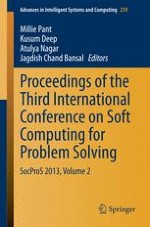The proceedings of SocProS 2013 serve as an academic bonanza for scientists and researchers working in the field of Soft Computing. This book contains theoretical as well as practical aspects of Soft Computing, an umbrella term for techniques like fuzzy logic, neural networks and evolutionary algorithms, swarm intelligence algorithms etc.
This book will be beneficial for the young as well as experienced researchers dealing with complex and intricate real world problems for which finding a solution by traditional methods is very difficult.
The different areas covered in the proceedings are: Image Processing, Cryptanalysis, Supply Chain Management, Newly Proposed Nature Inspired Algorithms, Optimization, Problems related to Medical and Health Care, Networking etc.
